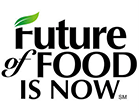
One way embrace the future of food is edible seaweeds. They are salt-dwelling, simple algae organisms that are sometimes referred to as sea vegetables. Seaweeds are found throughout the world’s oceans and seas, and there is a wide variety. Seaweed could well become a solution to meet the global challenges, from hunger to climate change.
Seaweeds are a nutritious and sustainable food source for ocean life and have been consumed by humans for centuries. You may have already eaten seaweed in sushi, in the form of spirulina or used it as an ingredient in a wide range of products from lotions to nutritional supplements. It is also used in bioplastic, biofuel, and natural fertilizer.
Seaweeds are also a source of a new class of high-quality protein which contains active ingredients not found in land plants. With its rich active substances, seaweed is a healthy food for sustainable applications such as plant-based meat, and plant-based protein. It has the potential to be a substitute for plastic.
There are already companies operating offshore farms and seed nurseries, launching consumer food products. Seaweed grows quickly and does not require fresh water, fertilizers, or arable land, and has a miniscule carbon footprint. Research published in Nature Magazine found that seaweed has the potential to sequester about 200 million metric tons of carbon dioxide per year—equivalent to the total emissions from New York state, according to the U.S. Energy Information Administration.
Seaweed salad and photo by Sarah Phillips @FutureofFoodisNow






